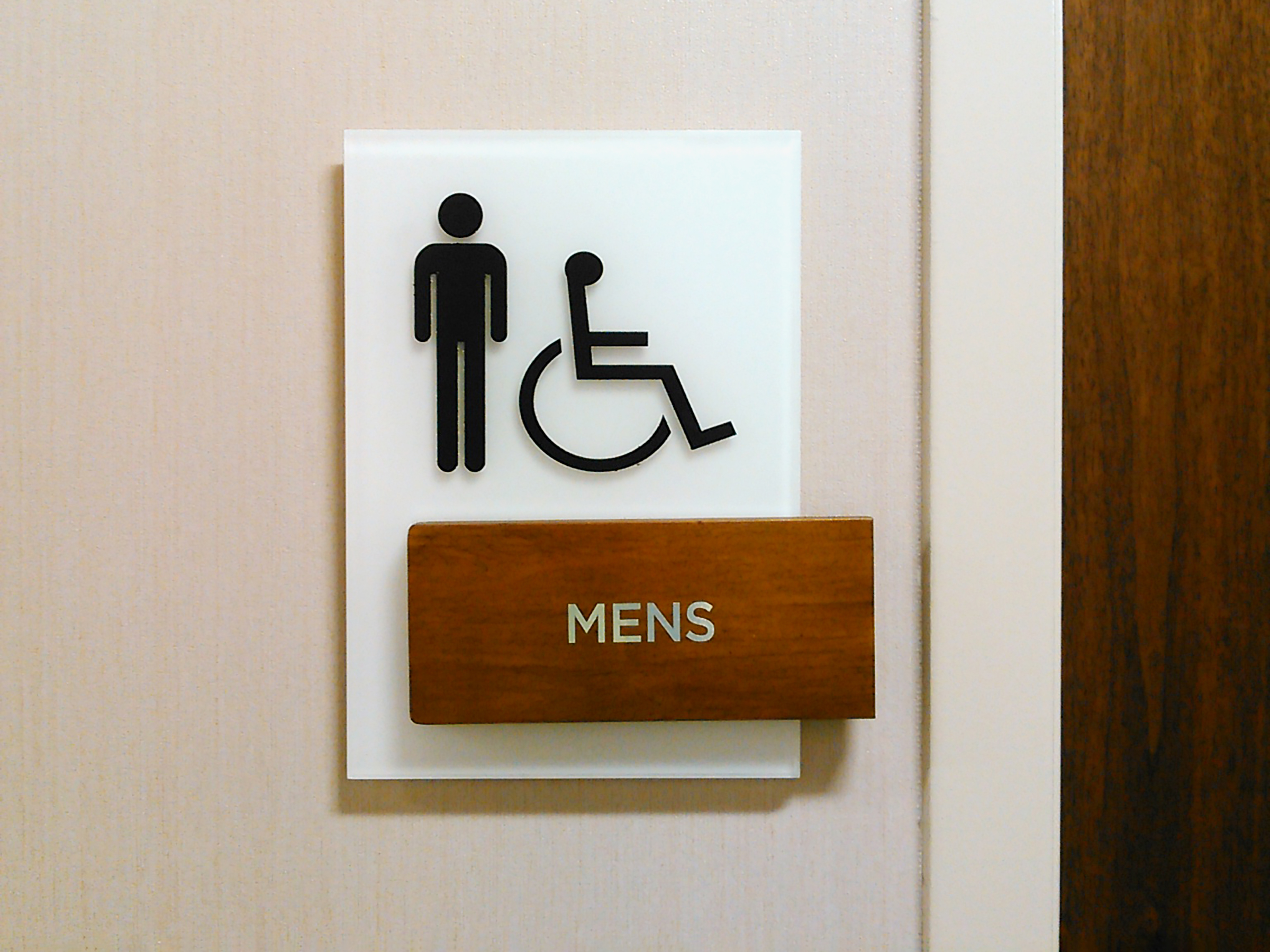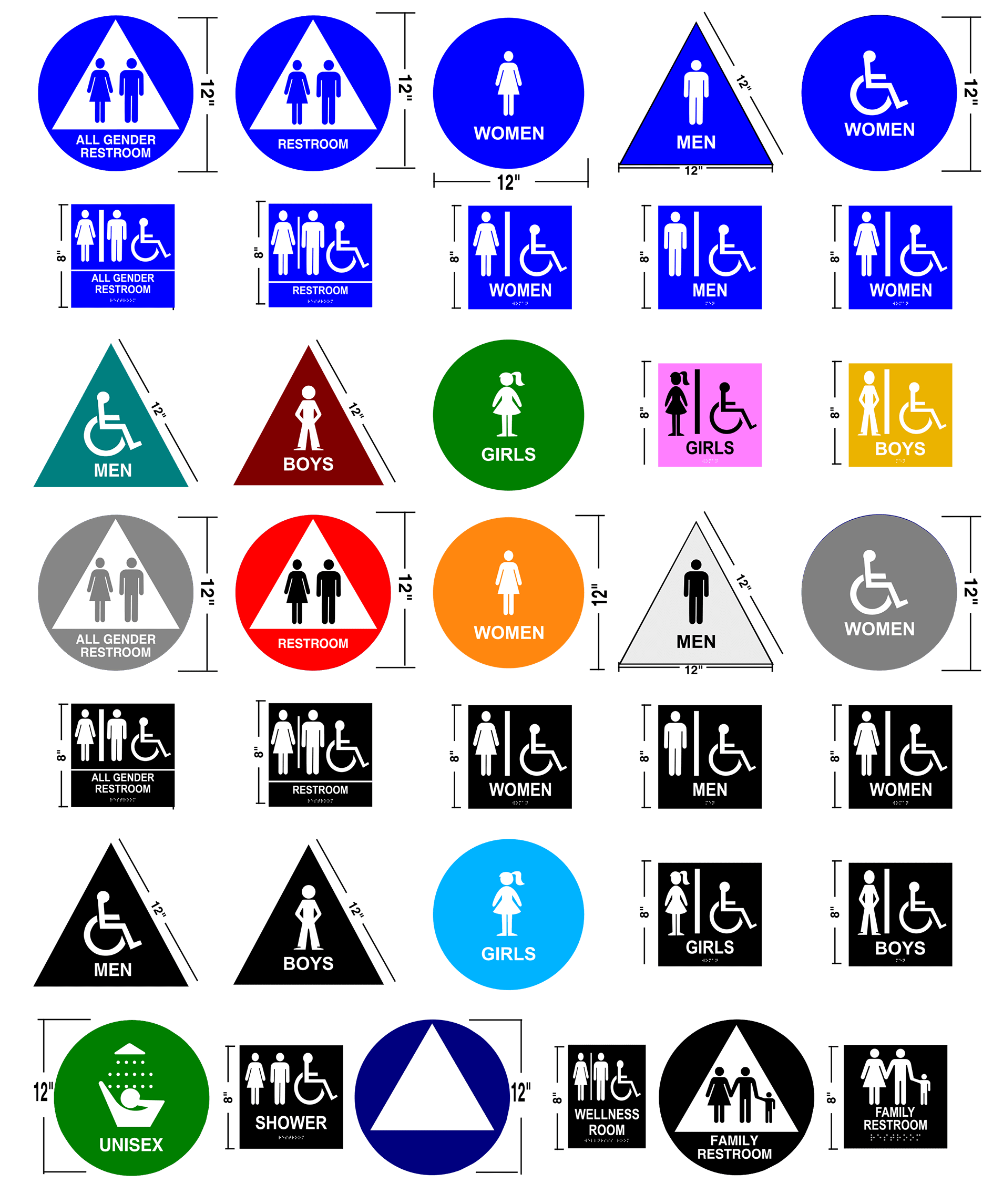Exactly How ADA Signs Boost Availability for Everyone
Exactly How ADA Signs Boost Availability for Everyone
Blog Article
Discovering the Secret Features of ADA Indicators for Boosted Accessibility
In the world of availability, ADA indicators serve as silent yet powerful allies, guaranteeing that rooms are comprehensive and navigable for individuals with impairments. By integrating Braille and responsive components, these indications break obstacles for the aesthetically impaired, while high-contrast color pattern and understandable typefaces cater to varied visual requirements. Their strategic placement is not arbitrary but instead a calculated effort to promote seamless navigating. Yet, past these attributes lies a deeper story regarding the development of inclusivity and the ongoing dedication to producing equitable rooms. What more could these signs indicate in our pursuit of global accessibility?
Relevance of ADA Conformity
Ensuring conformity with the Americans with Disabilities Act (ADA) is critical for cultivating inclusivity and equal access in public areas and workplaces. The ADA, enacted in 1990, mandates that all public facilities, companies, and transportation solutions accommodate people with handicaps, guaranteeing they delight in the very same legal rights and chances as others. Conformity with ADA criteria not only satisfies lawful responsibilities however additionally enhances an organization's track record by demonstrating its commitment to variety and inclusivity.
Among the key aspects of ADA conformity is the execution of available signage. ADA signs are developed to make sure that people with disabilities can quickly browse through areas and buildings. These indicators must abide by specific standards pertaining to dimension, font style, shade comparison, and positioning to guarantee visibility and readability for all. Appropriately implemented ADA signs assists get rid of obstacles that people with handicaps usually run into, thereby advertising their self-reliance and confidence (ADA Signs).
Additionally, adhering to ADA laws can alleviate the risk of lawful consequences and potential penalties. Organizations that fail to abide with ADA guidelines might deal with charges or legal actions, which can be both damaging and monetarily troublesome to their public photo. Therefore, ADA compliance is important to fostering a fair environment for every person.
Braille and Tactile Elements
The incorporation of Braille and tactile aspects into ADA signs symbolizes the concepts of accessibility and inclusivity. It is usually put under the equivalent message on signs to ensure that individuals can access the information without visual support.
Responsive components expand past Braille and include increased characters and symbols. These elements are created to be discernible by touch, allowing individuals to recognize area numbers, bathrooms, leaves, and other important locations. The ADA sets specific standards relating to the size, spacing, and positioning of these responsive aspects to optimize readability and make certain uniformity across different settings.

High-Contrast Color Design
High-contrast color design play a crucial function in enhancing the presence and readability of ADA signage for people with visual impairments. These plans are important as they make the most of the distinction in light reflectance between message and background, guaranteeing that signs are quickly discernible, also from a distance. The Americans with Disabilities Act (ADA) mandates making use of certain shade contrasts to accommodate those with limited vision, making it a crucial element of conformity.
The effectiveness of high-contrast shades lies in their ability to stand out in various lighting problems, including dimly lit settings and areas with glow. Typically, dark message on a light history or light text on a dark background is utilized to attain optimal contrast. Black text on a white or yellow history provides a raw visual difference that helps in fast acknowledgment and comprehension.

Legible Fonts and Text Dimension
When thinking about the style of ADA signs, the selection of readable typefaces and ideal text dimension can not be overstated. These aspects are vital for making sure that indicators come to individuals with visual impairments. The Americans with Disabilities Act (ADA) mandates that fonts must be sans-serif and not italic, oblique, script, very attractive, or of uncommon kind. These needs assist make sure that the text is quickly readable from a distance which the personalities are appreciable to diverse audiences.
According to ADA guidelines, the minimum message height must be 5/8 inch, and it ought to raise proportionally with seeing range. Consistency in message size adds to a cohesive visual experience, assisting individuals in browsing environments effectively.
Furthermore, spacing in between letters and lines is important to legibility. Sufficient spacing prevents characters from showing up crowded, enhancing readability. By adhering to these criteria, designers can dramatically improve access, guaranteeing that signs offers its intended function for all people, no matter their visual capacities.
Effective Placement Approaches
Strategic placement of ADA signs is crucial for making the most of ease of access and guaranteeing compliance with lawful requirements. ADA guidelines stipulate that indicators need to be installed at a height in between 48 to 60 inches from the ground to guarantee they are within the line of sight for both standing view it and seated individuals.
Additionally, indicators should be positioned nearby to the lock side of doors to enable very easy identification before access. Consistency in indicator placement throughout a center boosts predictability, decreasing confusion and boosting general customer click resources experience.

Conclusion
ADA signs play an essential function in promoting accessibility by incorporating attributes that attend to the needs of individuals with handicaps. These elements collectively cultivate an inclusive setting, emphasizing the value of ADA conformity in making sure equal gain access to for all.
In the realm of availability, ADA indications serve as quiet yet powerful allies, ensuring that spaces are comprehensive and accessible for people with handicaps. The ADA, passed in 1990, mandates that all public centers, companies, and transport solutions fit individuals with disabilities, ensuring they enjoy the same legal rights and opportunities as others. ADA Signs. ADA indications are created to ensure that people with handicaps can quickly browse via rooms and structures. ADA guidelines specify that indicators need to be mounted at a height in between 48 to 60 inches from the ground to ensure they are within the line of sight for both standing and seated people.ADA signs play a crucial role in advertising access by integrating functions that address the needs of people with disabilities
Report this page